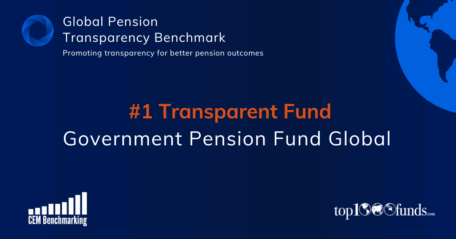Factors 2024
Promoting transparency for better pension outcomes
Factors Explained
The GPTB ranks 15 countries on public disclosures of key value-generation elements for the five largest pension fund organisations within each country.
The GPTB focuses on the transparency and quality of public disclosures with quality relating to the completeness, clarity, information value and comparability of disclosures.
The overall country benchmark scores were derived from an equal weighting over four factors, 156 questions asked, and 11,700 individual data points analysed. The four factors are governance and organisation, performance, costs and responsible investing.
Cost
Five Elements were examined, with 29 questions analysed across the components of: total fund disclosures; asset class/option level disclosure; external management fees disclosure; transaction costs; and member service cost disclosures.
Learn more
Performance
Performance scores were based on up to 44 questions across seven criteria: Total fund (or investment option) returns and value added; asset class returns and value added; clarity and quality of return and benchmark disclosures; asset mix and portfolio composition disclosures; explanation of risk management policies and specific risk disclosures; explanation of key results and outlook; member service goals, plans, and service level reporting; funded status disclosure discussion of assumption and risks.
Learn more
Select a factor
Cost.
Results Overview
Cost scores were based on 29 questions across three components common to all, and eight questions for member services. Member services represented 10 per cent of the total cost factor score but were only applicable for organisations that administer benefits in addition to managing the fund. This weight was redistributed to the other factors for funds that do not administer benefits, thus each individual fund would always receive a score out of 100.
There are barriers to comparability in reviewing costs across the globe. The differences in tax treatment, organisation/plan types, and accounting and regulatory standards means that it is difficult to find common ground for assessment. Thus, the review is not meant to be a comprehensive review of all cost disclosure elements as they vary from region to region and even from fund to fund. Rather, it is focused on the material areas common to most funds.
The average country cost factor score was 49, down slightly from last year’s review score of 51. Individual fund scores ranged from 4 to 100. The lowest-scoring cost component is the completeness of external management fees, followed by detailed asset-class cost disclosure.
As the dispersion in scores suggest, cost disclosures varied considerably in completeness. There was a wide range of quality as well, though qualitative factors were out of scope. Disclosures were better when the pension fund (defined benefit or defined contribution) was a single-purpose entity rather than a silo of a larger organization such as a wealth management company or a government department.
The Netherlands continued to lead the way with the highest country score of 89. The top three cost factor scores were held by The Netherlands, Canada and Australia. The primary distinguishing factor of these leading funds is the strict regulatory environment that they operate in.
Average score
Highest score
Cost questions asked
Overall Results Cost.
Year-on-Year Comparison
Cost Ranking
1.The Netherlands
2.Canada
3.Australia
4.United States
5.Sweden
6.Norway
7.Denmark
8.United Kingdom
9.South Africa
10.Brazil
11.Switzerland
12.Chile
13.Japan
14.Finland
15.Mexico
“It’s not what you pay a man, but what he costs you that counts.”
Will Rogers
Cost.
One common problem for stakeholders of large funds is incomplete and inconsistent cost transparency. Most costs reported to stakeholders are those that are explicitly paid (e.g., through written cheques or wire transfers) and exclude material costs that are netted from returns or from AUM. This is especially true for external management fees and transaction costs, two of the most material expenses for asset owners.
Generating adequate net investment returns is an absolute requirement for success for all funds. CEM’s asset owner performance database clearly shows that net returns are materially impacted by investment management costs, with approximately 75 per cent of gross returns above benchmarks going to pay related investment costs. Paying more does not necessarily get you more. Cost-effective investment management strategies generally outperform high-cost approaches over the long term. Costs matter. They should be understood, managed, and disclosed.
The assessment of cost disclosures included 29 questions organised across the components below. They focused on the completeness, accessibility, and level of detail provided.
Annual reports and financial statements were the main sources of information used for scoring. Occasionally, funds also provided cost information on their websites. For a few countries, some cost disclosures were sourced from regulatory body websites. These disclosures were reviewed if they were referenced on pension fund websites or in annual reports.
1. Total fund cost disclosures (35% of factor score)
Questions focused on whether total cost and the various components of total cost were disclosed. Points were awarded for describing and discussing cost/expenses in a prominent location, not only in the financial statements. Marks were also awarded for: putting total costs in the proper context (e.g., as a % of assets or compared to prior years’); for clarity on what costs were included and allocated; and, for the completeness of disclosures.
2. Asset-class level disclosures, or investment option for DC plans (15% of factor score)
Asset mix is an important driver of total fund costs. The focus was on completeness and level of disclosure across the various asset classes. Points were awarded if funds disclosed additional context on why their costs might be different. Examples of contextualization include information on asset mix or cost trends.
3. Completeness of external management fee disclosures (30% of cost factor score)
External management fees are typically the largest investment cost, even for funds that manage high proportions of their assets internally. The focus was mainly on external management fee disclosures in annual reports and financial statements. Generally accepted accounting principles for reporting investment costs vary considerably by country. This means that external managed costs are often not fully disclosed in the financial statements themselves. However, points were awarded if these costs were acknowledged, quantified, and reported elsewhere, such as in management discussion and disclosure analysis, key performance indicators, etc. For DC plans, these questions were answered from the context of disclosure of option level costs.
4. Member service cost disclosure (10% of factor score, where applicable)
Some organisations managed both the investment function and benefit administration for plan members. For these organisations, member service cost disclosures were scored separately. In contrast to the investment functions, member service “returns” are not as visible, so it is doubly important to provide stakeholders with the information that lets them know that cost monitoring is in place and that incurred costs are reasonable. Cost disclosures were reviewed for completeness, context, and level of detail.
Governance.
Results Overview
Organisations were scored based on 35 questions across four components. The average country score was 74 out of a possible 100. This represented an increase of three from last year’s average score of 71. The biggest Canadian public funds continued to be the leaders in governance disclosures, consistent with their reputation of excellent governance. Australia, Sweden, Denmark, and Finland scores improved significantly as they made changes to improve their governance disclosures.
In last year’s review we noted that governance scores were most closely correlated with the overall score and posited that perhaps it was that case that as good governance produces positive results, it creates greater incentive (or perhaps less disincentive) to be transparent with stakeholders. There is evidence of a relationship between responsible investing and governance scores. Good governance allows funds to move beyond simply managing assets and towards addressing wider environmental and social issues.
Average score
Highest score
Governance questions asked
Overall Results Governance.
Year-on-Year Comparison
Governance Ranking
1.Canada
2.Australia
3.Sweden
4.Denmark
5.Finland
6.United Kingdom
8.The Netherlands
8.Norway
9.South Africa
10.Brazil
11.Chile
12.Switzerland
13.United States
14.Mexico
15.Japan
“If you don’t know where you are going, any road will get you there.”
Lewis Carroll in Alice’s Adventures in Wonderland
Governance.
The assessment of governance and organisation disclosures included 35 total questions organised across the four components outlined below. Some revisions have been made to the questions informed by observations from last year’s review.
Questions around the philosophy and mix of internal/external and active/passive management were moved from the governance and organisation factor to performance. Questions around management governance of both investment and non-investment risks, previously part of the performance factor are now included in governance and organisation. These changes reflect that these items were more often observed alongside other information within the respective factors. Two questions were removed since they were similar to questions from the cost factor and there was not sufficient differentiation in results last year to warrant retaining. Additional questions were added in a couple of areas to allow for additional granularity of scoring where it was observed that several funds likely deserved partial marks based in last year’s scoring.
Annual reports usually contained much of the information, with much of that information mirrored or supplemented on websites. Occasionally, some disclosures were found in other documents such as: codes of ethics; corporate governance/stewardship guidelines; and investment policy statements.
1. Governance structure and mission (40% of governance and organisation factor score)
Effective stewardship of large pools of assets requires a robust governance structure with a clearly articulated mission. While assessing the quality of the governance structures in place is beyond the scope of the project, certain information is required for stakeholders to do any form of appraisal. Is the overall governance framework outlined including all committees and subcommittees responsible for overseeing management? Are the respective responsibilities of these bodies clearly articulated? Are the individuals who serve on these bodies identified along with how long they have served in their roles?
2. Board competencies and qualifications (20% of governance and organisation factor score)
A governance structure is only as effective as the combined skills and experiences of the individuals involved. Desired skills and competencies should be identified and disclosed, as should the actual skills and competencies of current directors and committee members. Governance structures and processes should evolve to meet changing needs. Disclosure of changes to process and structures, board effectiveness reviews, and continuing education endeavors signal an organisation with a governance structure that is dynamic and evolving. Unlike the ongoing nature of management, boards and committees convene only a finite number of times per year. The number of board and committee meetings along with member attendance should be disclosed.
3. Compensation, HR and organisation (25% of governance and organisation factor score)
Effective compensation policies should allow the attraction of skilled individuals and help drive and reward desirable behaviors. The processes and philosophies on how compensation is determined for both the board and senior management should be disclosed. Disclosure of actual compensation for the board, the CEO, and the management team is a demonstration that these processes are being followed. Better still if actual management variable compensation is justified with quantitative comparisons to organisational results. Statements of diversity demonstrate that an organisation is focused on all aspects of employee wellbeing. Total staff headcount and compensation lend insights into the structure of an organisation. Total staff headcount split by gender lends insights into the structure of an organisation and reinforces a commitment to diversity.
4. Organisational strategy (15% of governance and organisation factor score)
Disclosing overall organisational strategy beyond simple investment strategy, both for the past year as well as the future, demonstrates an integrated approach to management and allows stakeholders a more fulsome view. Detailed qualitative disclosures of the processes to manage risks, both investment and non-investment, provides valuable insights on the durability of organisational success.
Performance.
Results Overview
Performance scores were based on up to 44 questions across seven components that were common to all, and two (member services and funded status) that were only applicable for some organisations. Components were re-weighted to accommodate what was not applicable, so that each individual fund was scored out of 100. The overall average score was 63, down one from 64 last year and the third highest scoring factor after governance and responsible investing. Individual fund scores ranged from 19 to 100.
Disclosures were generally comprehensive for the current year and at the total fund or investment option level. In contrast, reporting on longer time periods and asset class results were more often minimal or missing although more funds were observed disclosing intermediate (i.e. three to seven years) performance figures.
The components with the highest scores continued to include asset mix and portfolio composition and risk policy and measures. Similarly, the lowest scores were seen for asset class returns and value added and benchmark disclosures.
The Canadian and American funds now lead the way, with an average country score of 89 for the performance factor. All country rankings and scores were as follows.
Average score
Highest score
Performance questions asked
Overall Results Performance.
Year-on-Year Comparison
Performance Ranking
1.Canada
United States
3.Australia
4.Sweden
5.Japan
6.The Netherlands
7.Finland
Norway
9.South Africa
10.Denmark
11.Switzerland
12.Brazil
13.Chile
13.United Kingdom
15.Mexico
“However beautiful the strategy, you should occasionally look at the results.”
Sir Winston Churchill
Performance.
The assessment of performance disclosures included 44 questions organized across the components outlined below.
Annual reports usually contained much of the information to be analysed. Some funds, and especially DC funds, also had extensive reporting on their websites. Occasionally, some disclosures were found in other documents such as: listings of investment holdings and external managers; investment policy statements; and risk policy statements.
The performance factor was assessed by looking at the following criteria:
1. Total fund (or investment option) and asset class returns and value added (25% of the performance factor score)
Generating adequate investment returns is fundamental to the success of all pension plans. Asset mix is the biggest driver of long-term returns. Most funds also implement active management programs, aiming to add value over passive public market implementation. The review of return and value-added disclosures covered timelines reported for total fund and asset class results: 1-year; intermediate (any of 3 to 7-year); long-term (10 years or more); and current (e.g. monthly, quarterly).
2. Clarity and quality of return and benchmark disclosures (17% of the performance factor score)
Evaluating returns and value added is difficult unless you understand the basis for the calculations and the composition of the benchmarks used. Important considerations include: Are returns gross or net of investment costs? Are asset class benchmarks appropriate and comparable?
3. Asset mix and portfolio composition disclosures (15% of the performance factor score)
Investment performance is driven by asset class exposures, implementation, and holdings of specific investments. Disclosures related to these portfolio factors enhance understanding of performance. Disclosures focused on included: current asset mix and trend; exposures and concentration by market, geography, holding, and manager; and implementation details within asset classes.
4. Explanation of risk management policies and specific risk disclosures (5% of the performance factor score)
Investment rewards and risk go hand in hand. Risk is unavoidable. But sound risk management policies and practices help organisations prepare for and manage adverse events. The disclosures of actual risk levels were evaluated (eg value at risk, liquidity, credit quality, foreign exchange exposure).
5. Explanation of key results and outlook (9% of the performance factor score)
Commentary on the economic and market conditions experienced adds color and depth to the understanding of results achieved. The analysis also looked for a ‘looking ahead’ discussion of economic and market conditions and possible implications.
6. Member service goals, plans and service level reporting (20% of the performance factor score when applicable)
The investment function was included within the mandate of all pension funds reviewed, but for some, the member service function was the responsibility of another organisation that was not reviewed. Where member service was part of the mandate, analysis was on disclosures relating to: goals, plans and progress; actual service levels achieved (eg call answer times, website features and service transaction volumes) and reporting of customer satisfaction, customer effort and net promoter scores.
7. Funded status disclosure discussion of assumptions and risks (9% of the performance factor score when applicable)
Some of the funds reviewed managed defined benefit assets and had responsibility for both sides of the pension balance sheet – assets and liabilities. For these funds we assessed disclosures related to funded status including disclosure and discussion of key assumptions and risks.
Responsible Investing.
Results Overview
Funds were scored based on 48 questions across three major components. The average country score was 67 out of 100, up from 59 in last year’s review, once again marking the biggest relative improvement among any of the four factors. Improvements to disclosures were evident across all components and most countries. RI did continue to have the greatest dispersion of scores reflecting that countries are at different stages of implementing responsible investing within their investing framework. Average country scores ranged from 0 to 100.
Canada ranks in first place with a score of 96. The Dutch and Swedish funds were not far behind scoring 92 and 89 points respectively. Both countries had improved disclosures over the past year. The Nordic countries – Sweden, Denmark, Finland, and Norway – continued to do very well on RI as a region, with all countries receiving scores above the overall average.
Average score
Highest score
Responsible investment questions asked
Overall Results
Responsible Investing.
Year-on-Year Comparison
Responsible Investment Ranking
1.Canada
2.The Netherlands
3.Sweden
4.Denmark
5.Finland
6.Australia
7.Norway
8.United Kingdom
9.United States
11.South Africa
12.Japan
13.Chile
14.Mexico
15.Brazil
“Society grows great when old men plant trees whose shade they know they shall never sit in.”
– Greek proverb
Responsible Investing.
There is increasing consensus that large institutional investors should integrate responsible investing as part of their overall fiduciary framework. While some have argued that a focus on RI is incompatible with the core fiduciary responsibility of generating returns, emerging research, including a recent CEM study, suggests that the two goals are not mutually exclusive.
The assessment of responsible investing (RI) disclosures included 48 questions across the three key components outlined below.
The review encompassed assessing annual reports, responsible investing reports, websites, and various policy disclosures. Given the relatively recent adoption of RI by many funds and the nascent global standards and reporting guidance for RI, the disclosures varied widely across funds and countries.
1. Responsible investing framework and reporting (30% of responsible investing factor score)
Questions assessed whether disclosures laid out how RI fits into the overall strategy for the fund. This included the goals and targets for RI and whether the progress made towards these goals and targets were disclosed. The verification of RI disclosures by independent third parties and alignment with emerging global standards for RI reporting (GRI – Global Reporting Initiative; and TCFD – Task Force on Climate-related Financial Disclosures) was also considered.
2. Responsible investing governance (15% of responsible investing factor score)
For RI to be successful there needs to be accountability. The responsibilities for oversight and implementation need to be clearly laid out. Important considerations in evaluating disclosures around governance include whether RI is part of the board’s oversight and how it is integrated within the organisation including executive management oversight and whether there is a dedicated role or team.
3. Responsible investing implementation (55% of responsible investing factor score)
Evaluation of implementation disclosures covers the key policies that funds use to implement RI. Funds are scored on whether actual activities and specific metrics are provided. Key implementation policies included in the assessment are:
- Exclusion
Disclosure of screening and monitoring criteria used to assess eligibility of investments. For instance, some funds exclude tobacco companies and list excluded investments. - Active investing
Disclosures around ownership policies that outline how funds engage with investees to bring about change that aligns with RI investing policies, values, and goals. For instance, funds are scored on whether disclosures around voting records, engagement statistics, etc. are provided. - Impact investing
Disclosures on how funds invest to promote sustainability. Assessments include whether key focus areas or goals are provided, metrics such as percentage of portfolio impacted, and examples of investments (i.e., investing in renewable energy to reduce carbon footprint).
4. ESG integration
Disclosures related to the various ways responsible investing is implemented across the portfolio, including whether RI is part of the criteria for evaluating external managers and if it is included in risk management processes.
Insights
Canada marks five-year reign as global transparency leader
Canada has been named the country with the most transparent pension funds for the fifth...
Global pension funds lift transparency, but cost reporting still lags
Global asset owners have made significant advancements in the transparency of disclosures with the...
Norway’s GPFG keeps most transparent pension fund title with perfect score
Norway’s $2 trillion Government Pension Fund Global has retained its title as the world’s most...
CPP Investments, NBIM reflect on lessons from a 5-year transparency journey
The Global Pension Transparency Benchmark has been a driving force in improved transparency of disclosures and reporting among global asset owners....
Why transparency is a strategic initiative for Norway’s SWF
Norway’s giant sovereign wealth fund took out the top spot in this year’s Global Pension Transparency Benchmark. Amanda White talks to CEO of Norges...
Global Pension Transparency Benchmark makes process improvements
The Global Pension Transparency Benchmark, a collaboration between Top1000funds.com and CEM Benchmarking, ranking pension funds globally on their...
Benchmark proves scrutiny on disclosure drives transparency improvements
Now in its fourth iteration, the Global Pension Transparency Benchmark shows that ongoing scrutiny of cost, governance, performance and responsible...
Please note, your details will be shared with both CEM and Top1000funds.com. Your data will never be shared with any other organisations or third parties.









